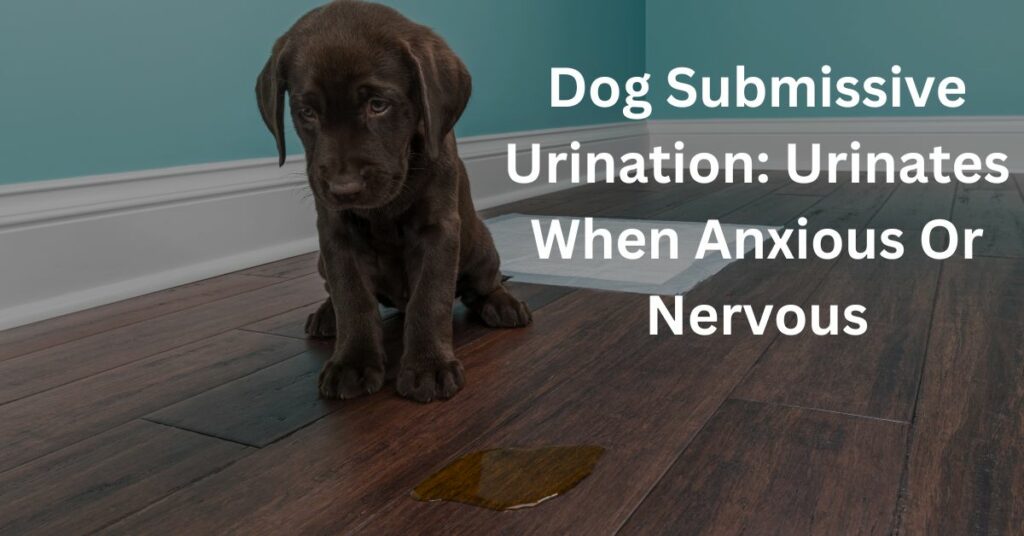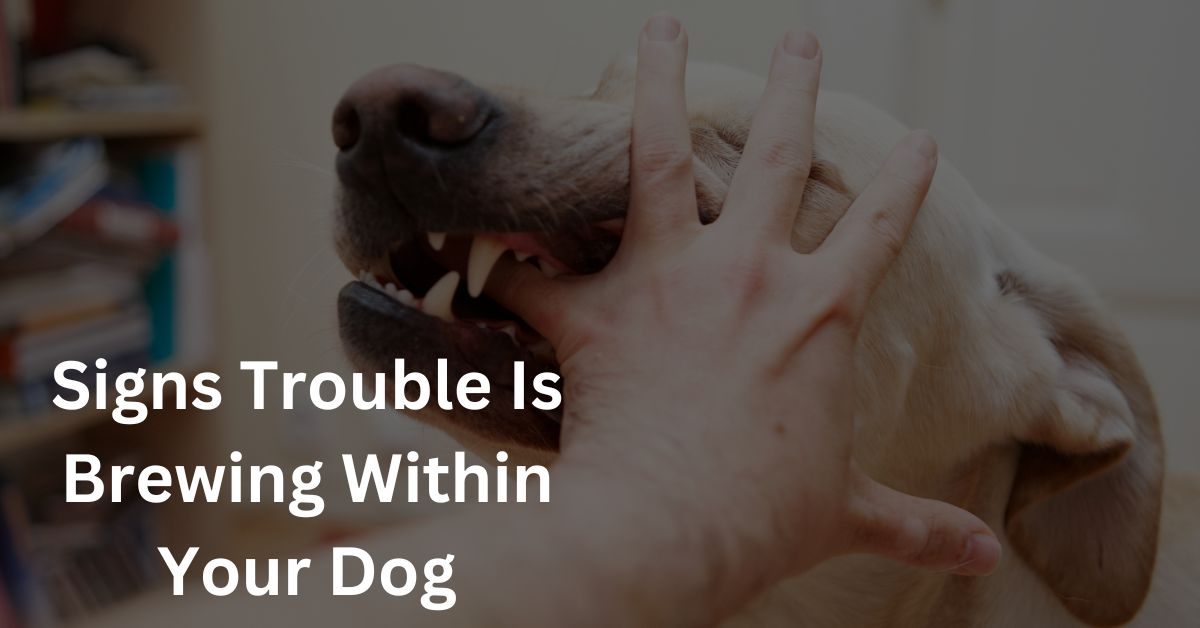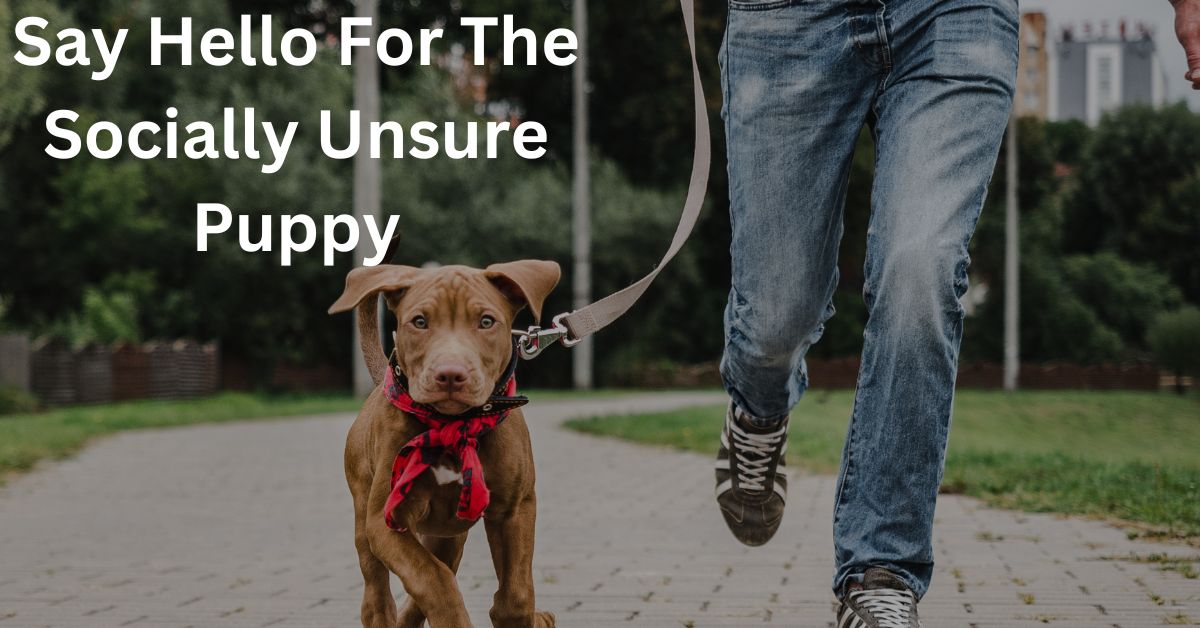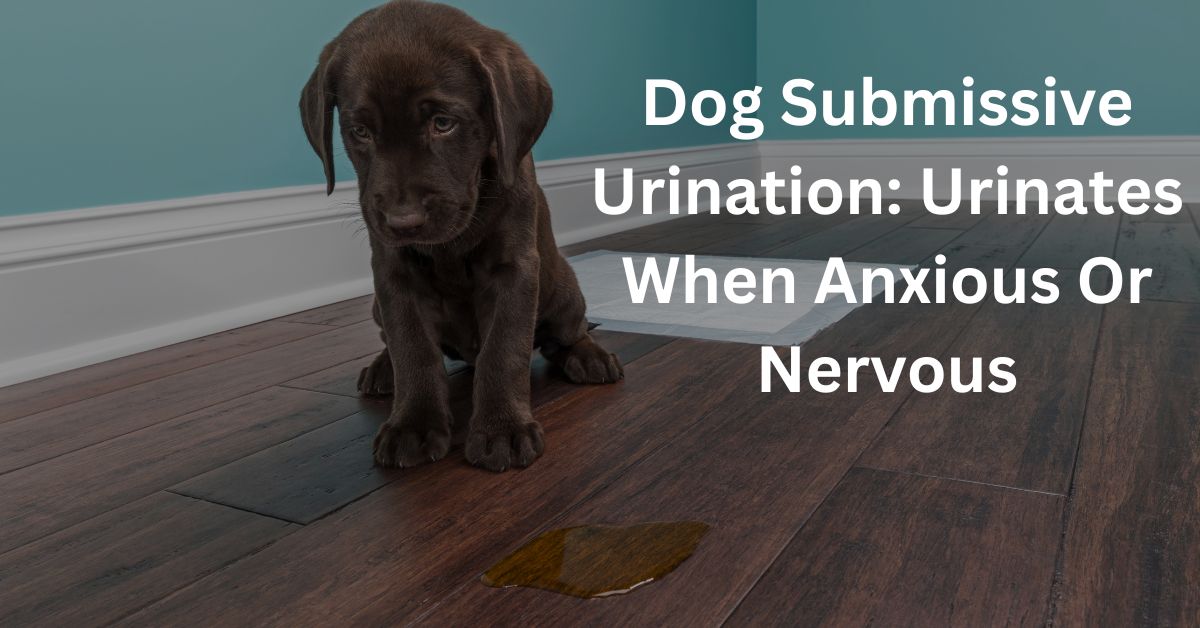As dog lovers, it is important to understand the mix of emotions when your dog’s excitement leads to an unexpected puddle on the floor. Submissive urination is more than inconvenient; it reflects your dog’s internal stress or desire to show deference.
It’s easy to mistake these moments for acts of defiance, but often, they’re signs of a dog’s extreme etiquette. Your dog is very politely saying, “You are bigger than me; please don’t hurt me; I am no threat”.

Table of Contents
Understanding Submissive Urination
Submissive urination is a sign of extreme politeness and submission in dogs, often triggered by anxiety or nervousness. Certain breeds are more prone to this behavior, for example, American Cocker Spaniels and Golden Retrievers; and owners need to understand the common triggers and how to address them effectively.
Sign of extreme politeness and submission
Often, your dog shows signs that they’re trying to be polite in their way. Submissive urination is their extreme form of saying, “I mean no threat.” Imagine a dog flattening its ears, avoiding eye contact, and maybe even rolling over – adding a little puddle into the mix is like sending a handwritten note of deference.
They want to show us and other dogs that they acknowledge authority and intend no challenge.
This behavior usually happens at moments we might not expect: someone comes through the door or when you call them over after arriving home. Your dog isn’t being naughty; they’re simply speaking in dog etiquette—the wetter version!
Let’s consider what gets your pups so anxious that they resort to this humble gesture—understanding common triggers for submissive urination will help you relate better with your dog.
Common triggers for submissive urination
Submissive urination is a behavioral issue seen in dogs that feel overwhelmed or insecure. It’s your job to recognize the common triggers and work with your dog to help them feel more confident.
- Greeting the dog too excitedly: When you or someone else comes home and greets a dog with a lot of excitement, it can trigger anxiety and lead to submissive urination.
- Scolding or sharp commands: Dogs might pee submissively if they associate being called with negative experiences or if they’re met with loud, stern voices.
- Intimidating body language: Standing over a dog, making direct eye contact, or using large gestures can be perceived as threatening and may cause submissive peeing.
- Historical intimidation: If a dog has had past experiences where they’ve been scared or intimidated, especially by unpredictable personalities, they might develop this submissive behavior.
- Strangers entering the home: The arrival of unfamiliar people can be stressful for some dogs, prompting them to urinate out of nervousness.
- Abrupt environmental changes: Sudden movements or loud noises like thunderstorms or fireworks can frighten dogs into submissively urinating.

Dog breeds prone to submissive urination
Moving on from the triggers that may cause your dog to urinate submissively, you should note that some breeds seem more inclined towards this behavior than others. Indeed, genetics can play a role in submissive urination, and these certain breeds, due to their temperament and behavioral characteristics, are more susceptible.
Here is a rundown of breeds that are often prone to submissive urination:
| Breed | Reason for Predisposition |
| American Cocker Spaniel | They are known for their sensitive nature, which may lead to submissive behaviors. |
| Golden Retriever | Typically eager to please and may display submission to appease their owners. |
| German Shepherd | Despite their strong appearance, they are sensitive and may urinate when feeling insecure. |
| Labrador Retriever | Very social and may exhibit submissive urination during overly exciting greetings. |
| Border Collie | Highly responsive to their owner’s reactions, potentially leading to submissive urination. |
| Beagle | Because of their gentle temperament, they may submit to show respect or avoid confrontation. |
While these breeds might have a natural tendency towards submissive urination, with the right approach, you can help them overcome this challenge.
Addressing Submissive Urination
When dealing with submissive urination, it’s important to avoid using corrections or punishment, as this can exacerbate the issue. You should also be mindful of your body language and tone of voice when interacting with a dog prone to submissive urination, offering reassurance and positive reinforcement to build confidence.
Avoid using corrections
Using corrections to address submissive urination can exacerbate the problem. Instead of scolding or punishing the dog, focus on positive reinforcement and building confidence. Corrections only increase anxiety and fear in a submissive dog, making the issue worse rather than better.
Implementing training techniques that focus on positive reinforcement and obedience training can help modify the behavior. By understanding canine body language and communicating with dogs effectively, you can address submissive urination without resorting to corrections that may worsen the situation.
It is better to completely ignore the wet patch and quietly clean it up without fuss.
Common mistakes made by people
People often inadvertently exacerbate submissive urination in their dogs by using corrections or scolding. Here are common mistakes made by people:
- Using punishment: Harsh punishments or scolding the dog for submissive urination only worsen the issue and can lead to increased anxiety in the dog and more wet patches.
- Direct eye contact: Staring directly at a submissive dog can be intimidating, leading to increased urinary accidents.
- Incorrect greetings: Approaching a submissive dog in an assertive or overly bold manner can trigger further anxiety and urination.
- Inconsistency: Inadvertently reinforcing the behavior through inconsistent responses, such as lavishing attention during accidents but scolding later, can lead to confusion for the dog.
- Lack of understanding: Failing to recognize that submissive urination is not intentional or disobedient behavior can result in incorrect handling of the situation.
- Ignoring signs of distress: Overlooking timid behavior, cowering, or obsequious gestures as signs of anxiety may perpetuate the problem.
Advice for addressing submissive urination
To address submissive urination, it’s essential to approach the situation with understanding and patience. Considering the dog’s emotional state and following these tips can help in managing or reducing submissive urination:
- Ignore the dog when returning home or greeting them, as this can reduce the pressure and anxiety that triggers submissive urination.
- Instruct guests to avoid direct eye contact or physical interaction when entering the house. This eliminates potential triggers for submissive behavior.
- Distract the dog with a treat when you or family members return home, providing an alternative focus for their excitement and reducing the likelihood of submissive urination. Keep some by the door, and throw one to your dog when you come in.
- Implement obedience training to build confidence and security in your dog, which can decrease submissive behaviors over time.
- Utilize positive reinforcement techniques during training sessions to encourage desired behavior while avoiding punishment-based methods.
- Gradually expose your dog to different situations and environments to help them become more comfortable and confident, reducing anxious responses that lead to submissive urination.
- Seek professional guidance from a certified canine behaviorist or trainer if you struggle to manage your dog’s submissive urination effectively.
Other Related Issues
Other related issues such as “Caught Short,” “Joie de Pee,” “Marking the Owner,” and “Assertive Gesture” can also be signs of different submissive behaviors in dogs that may require attention.
Caught Short
Caught Short describes a dog who urgently urinates due to an inability to hold it any longer. This can happen when the dog cannot access their usual toileting area, leading to an accidental bathroom accident.
People must be mindful of their dog’s bladder control and allow regular bathroom breaks to prevent such instances.
Incontinence or urinary urgency can cause dogs to be caught short, resulting in accidents inside the house. Understanding your dog’s needs and ensuring access to appropriate toileting areas can help mitigate these situations, promoting better bladder control and reducing the likelihood of bathroom accidents.
Joie de Pee
“Joie de Pee” refers to how a male dog, usually a male puppy, leaves a wavy pee line behind as he wags his way happily through life.
Marking the Owner
Submissive urination can extend to marking behavior, where a (usually male) dog may urinate in the presence of their owner to claim the person as his.
You must address any underlying emotional issues causing this behavior by providing positive reinforcement and implementing proper training techniques.
Recognizing and addressing the triggers with patience and understanding is vital in helping the dog overcome this submissive marking behavior.
Assertive Gesture
When understanding canine behavior, it’s crucial to recognize the signals of Assertive Gesture. This behavior is a way for dogs to assert control in situations that trigger feelings of insecurity or anxiety.
The dog may walk up to the person, make direct eye contact, and urinate on or near them. The ears may be forward, the mouth closed, and the face tense. If you see or suspect this, please contact a reputable behaviorist immediately. This behavior should never be ignored.
Final Thoughts on Dog Submissive Urination
Addressing submissive urination requires a shift in understanding rather than punitive measures. By understanding that your dog is being very polite and not trying to annoy you, you can avoid corrections and ignore the wet puddles, reducing your dog’s initial anxiety and helping your dog overcome this behavior.
Remember to ignore the dog during trigger situations while instructing guests to do the same. Distracting the dog with a treat or toy upon arrival can also aid in reducing anxious or nervous urination.
These practical strategies, if implemented consistently, have the potential to significantly improve your dog’s behavior and eliminate those wet patches!




Leave a Reply